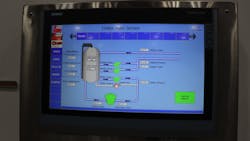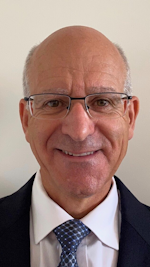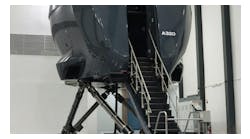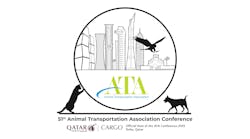Reducing O&M Costs Using Automation to Monitor Facility Test Equipment
Bauer, Inc., a leading aircraft testing equipment and services provider had limited visibility across up to 20 testing platforms operating simultaneously. An automated facility services monitoring system using Siemens components provided greater operational visibility, avoidance of peak utility surcharges, and a foundation for additional functionality.
Founded in 1916, the Bauer company isn’t a household name.
Chances are though, anyone who’s flown commercially just about anywhere owes their safe journey partly to Bauer’s wide range of test, wheel, brake and support equipment the aviation industry depends on to keep their aircraft flightworthy.
Based in Bristol, Connecticut, Bauer’s customers include the world’s top airlines, the military aviation operations of many nations, OEMs, and third-party maintenance repair organizations that perform overhauls. Bauer designs, assembles and tests all of its equipment within a 75,000-square-foot facility at its headquarters. The company also has offices across the globe to support customers in those regions.
Challenge: Limited visibility across up to 20 testing platforms operating simultaneously
According to Bauer Engineering Fellow Joel Kuczenski, who has more than 35 years of experience in aircraft component testing, the company’s facility can have as many as 20 test stands evaluating various aircraft component systems for different customers.
“Problems arose when our engineers would leave for the day. They might turn off the process cooling water, compressors, or our 50 and 400-cycle test generators, not knowing that one or more test stations were still operating. Conversely, they might leave the various services running with none of the test stations operating. We had no easy way, all in one place, to view what equipment was operating.”
Kuczenski explains that process cooling water is supplied for almost all of Bauer’s hydraulic equipment: An electric-powered hydraulic pump module can use up to 500 horsepower to supply temperature-controlled fluids to flight hardware on a test stand. The fluids are typically cooled to 80°F. To achieve this, Bauer uses a large process water chiller rated at 150 tons that delivers 50°F process water at 400 gallons per minute into a 1000-gallon buffer tank.
“The buffer tank supplies a facility-wide manifold of test stand stations that return the heated process water to the buffer tank,” Kuczenski says. “At any one time, we’ll be using “cooling water” in testing as many as five large pieces of equipment plus up to 10 medium-sized ones, so it’s critical to our operations.”
He further explains that if an engineer turns off any of the facility services, not knowing other engineers are running one or more tests, the tests would have to be re-run.
“This would cost us time, and if lack of facility services causes the equipment being tested to be damaged, it could be an expensive mistake.” Kuczenski notes those costs could run as high as $150,000 or more. “If our process water or other support equipment is left on, we’re consuming unnecessary energy, especially if it happens over a weekend, causing us to incur costly and unbudgeted peak-load charges from our utility.”
Solution: An automated facility services monitoring system using Siemens components
To address these issues, Kuczenski and the electrical engineering group designed and engineered an automation and control solution that monitors and manages the process water chiller performance and the facility’s peak and continuous power usage.
“The system can alert management to operational changes we can make to our production testing to shed peak energy loads when possible,” he described. The automation package also monitors systems usage during and after regular business hours. “In a predetermined sequence, it can either idle a test-stand service or shut it down until testing is resumed and an engineer requests it to run again.”
To build the system, Bauer used components from the Siemens Totally Integrated Automation (TIA) portfolio, including a programmable logic controller (PLC), soft starters for the process water chiller’s four pump motors, and a 19-inch color touch-screen panel. They also added two manually operated safety switches on the chiller system—one an E-stop; the other a controlled stop switch. The system uses industry-standard Modbus for direct digital communications between the PLC and the chiller. In addition, he used the Siemens TIA Portal, an all-in-one software engineering platform, to program the system.
“The easy integration of all the Siemens components plus their programming saved many hours and possibly even days in developing this solution, including its design, engineering, testing, and commissioning.”
Results: Greater operational visibility, avoidance of peak utility surcharges, and a foundation for additional functionality
The Bauer automated facility services monitoring system is now operational, Kuczenski reports. He and his team mounted the large SIMATIC HMI Comfort Panel display on the wall outside the engineering office. Also, because the SIMATIC S7-1500 has a built-in web server, the system can be operated remotely and issue alerts to Kuczenski or others in Bauer’s management team if human intervention is needed.
“Our staff can quickly check the operational status of their equipment on test and those of their colleagues before leaving, so they don’t inadvertently shut down the chiller system and interrupt a testing operation.”
Today, the Bauer engineering staff has much more visibility into the operating status of its test-stand services, which can number a dozen or more at any time across nearly two acres of floor space. Kuczenski hasn’t yet compared the facility’s utility expenses with prior years, but he’s confident that the system has helped the company avoid unnecessary peak-load surcharges. In the next phase of the system’s evolution, Kuczenski and the electrical engineering group plan to add much more functionality to the system. For example, individual test cells can sign in and out of various facility services, either onsite or remotely. These include access to process water, test generators, and high-flow and high-pressure compressors. In addition, the services will shut down automatically if left unattended after hours.
“We’ll also look to add building HVAC monitoring and peak-load energy reporting. Additional opportunities may include solar system monitoring and facility lighting control. The SIMATIC S7-1500 gives us options in how we use our system.” Kuczenski notes that Bauer is using the automated facility services monitoring system to showcase its engineering capabilities when customers visit, adding that the opportunity to show customers industry-leading automation and control solutions demonstrates Bauer’s innovation and competitive advantage.
Kathrin Starschich is a Siemens Market Development Manager with over 12 years in Product Management and Business Development. She has worked with Siemens in Germany and the US and is supporting machine builders nationwide. Kathrin’s background in Simulation and Automation comes in handy when developing joint product strategies with customers in various industries.
Siemens’ David Della Camera has more than 30 years of sales and management experience in the Industrial Automation field, including a strong background in Industrial, OEM and Contractor markets. He leads the formation of ideas and concepts, design and development of Industry 4.0 (IIOT), enterprise architecture and the optimization of supply chain solutions. David has proficiency in the areas of Automation, PLC’s, Interactive Display Terminals, PC Base Control Software, Industrial Control, AC, DC and Vector Drives, Transformers, Motors and Sensors.





